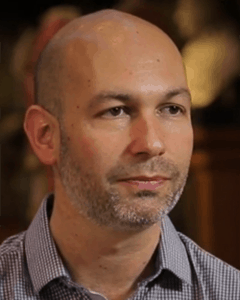Dyslexia Symposium
New Perspectives into Neurobiology of Reading and Dyslexia
Wednesday, August 21, 2019, 8:00 – 9:45 am, Finlandia Hall
Reading processes rely on the integration of efficient component processes such as phonological, orthographic and semantic processes, coupled with domain general processes such as attention. Reading phenotypes, including specific learning disabilities such as decoding-specific reading disorders (a.k.a. developmental dyslexia), affects 5-10% of all children and are complex traits requiring multiple cognitive and neural processes mediated by interacting genetic and environmental factors. In this symposium, we will present the latest research performed in 4 different laboratories that aims to advance our understanding of the neural mechanisms underlying dyslexia. Research presented adopts a number of neuroimaging modalities from functional and structural MRI, MR spectroscopy, magnetoencephalogram (MEG) and electroencephalogram. This symposium is in collaboration with the European and International Dyslexia Associations’ (EDA and IDA, respectively) Scientific Advisory Boards.
Chair: Michal Ben-Shachar
Speakers:
 Kenneth Pugh
Kenneth Pugh
President and Director of Research at Haskins Laboratories
Professor at Yale University and Yale University School of Medicine
Professor at University of Connecticut
kenneth.pugh@yale.edu
Building the literate brain: How learning to read depends upon, and changes, brain organization for spoken language.
The development of skilled reading involves a major re-organization of language systems in the brain. We will present ongoing research from our lab on the genetic and neurobiological foundations of learning to read across writing systems, with particular focus on bi-directional dependencies between brain pathways that are critical in linking spoken and written language. Our research suggests that print/speech convergence in language cortex accounts for individual differences in reading outcomes in high and low risk learners. New longitudinal findings from our lab using computational models to better understand critical gene-brain-behavior connections in early language and speech motor development and reading and are discussed in detail (including new findings with magnetic resonance spectroscopy and multimodal brain imaging that reveals how excitatory and inhibitory neurochemistry moderate language and reading development in high risk children). Finally, we discuss recent studies that extend this brain research into second language learning.
About Kenneth Pugh
Dr. Pugh is the President and Director of Research at Haskins Laboratories, a Yale University and University of Connecticut affiliated inter-disciplinary institute, dedicated to the investigation of the biological bases of language. He also holds academic appointments in the Department of Psychology at the University of Connecticut, in the Department of Linguistics at Yale University, and in the Department of Diagnostic Radiology at Yale University School of Medicine. He serves as a member of the Scientific Advisory Board for the International Dyslexia Association, the Scientific Advisory Panel for Dyslexia International in Paris, a member of the Board of Visitors for the Learning Research.
 Franck Ramus
Franck Ramus
Senior Research Scientist, Centre national de la recherche scientifique
Adjunct Professor, Department of Cognitive Studies, Ecole Normale Supérieure
franck.ramus@ens.fr
Cortical oscillations for speech processing in dyslexia
We will report the results of our MEG investigations of cortical oscillations in response to speech and nonspeech in dyslexic and normal reading adults. We will focus on the replication of previously published results on auditory entrainment in the delta, theta and gamma bands, and new investigations on the role of alpha band oscillations, and on the coupling between alpha and other frequency bands.
About Franck Ramus
Franck Ramus is a CNRS senior research scientist and adjunct professor at the Department of Cognitive Studies, Ecole Normale Supérieure in Paris. His research bears on the development of language and social cognition in children, its disorders (developmental dyslexia, specific language impairment, autism), its cognitive and neural bases and its genetic and environmental determinants.
 Paavo Leppanen
Paavo Leppanen
Professor and Vice-Dean of Research, Faculty of Education and Psychology, University of Jyväskylä, Finland
paavo.ht.leppanen@jyu.fi
Neural signatures of speech perception, attention and reading in dyslexia
Reading difficulties are linked to multiple atypical processes or deficits at multiple levels. We will report recent brain response findings from our eSeek-study (“Internet and learning difficulties: multidisciplinary approach for understanding information seeking in new media”), where we used different experimental designs and stimuli with the same 14-year old school-age children with typical reading skills and those with reading (RD) and attentional difficulties (AD). The cross-linguistic speech perception experiment shows differences in the pattern of speech driven brain responses to native- and non-native speech sounds in both RD and AD children. The brain response findings from the experiment measuring attention network (ANT-task) show that both dyslexic and AD children differ from control children as well as from each other in their neural sources of several sub-processes of attention. The eye movements and fixation related brain responses (FRPs) of dyslexic readers measured during a natural sentence reading task and extracted using linear deconvolution approach show differences compared to typical readers. We discuss our findings from the multiple deficit and shared deficit perspectives.
About Paavo H.T. Leppänen
Paavo H.T. Leppänen, PhD, Vice-Dean (research) of the Faculty of Education and Psychology, is Professor of psychology and dyslexia research at the Department of Psychology at University of Jyväskylä (JYU), the head of the EEG and behavioral cognitive psychology laboratories of Department of Psychology (JYU). He has long experience in the research of learning disorders, especially reading and reading difficulties and related cognitive risk factors using both brain event-related potential (ERP) and behavioral research methods with infant, child and adult populations. He currently conducts and directs research in the field of developmental cognitive neuroscience using MEG and EEG techniques, and those combined with eye-tracking methodology. His research themes include digital and Internet reading (with web-based, behavioral, eye-tracking and brain response measures), dyslexia, language difficulties, and problems in foreign/ second language learning, their risk factors and neurocognitive processes of reading.
 Fumiko Hoeft
Fumiko Hoeft
Professor, Department of Psychological Sciences, and Director of Brain Imaging Research Center (BIRC), University of Connecticut
fumiko.hoeft@uconn.edu
Intergenerational Neuroimaging of Literacy and Dyslexia: A New Cognitive Neuroscience Research Paradigm
Parents have large influence on offspring’s brain and cognitive development. The Intergenerational Multiple Deficit Model (iMDM [van Bergen et al. Front Hum Neurosci 2014]; or Cumulative Risk and Protection Model, CRAP Model) affords integration of parental influences as well as others, whether genetic or environmental, and whether risk or protective factors, to explain individual differences in reading ability and liability for developing dyslexia, a specific disorder of reading. Further, it has recently been suggested that most complex traits show intergenerational sex-specific transmission patterns, which could help uncover biological pathways of transmission. Macrocircuits using imaging may be an ideal target for investigations of intergenerational effects, where key causes may converge in ways that lead to complex phenotypes such as reading and dyslexia.
Based on these notions, we are currently examining how parental cognitive and neuroimaging patterns are associated with offspring’s reading and related imaging patterns (e.g. Black et al. NeuroImage 2012, Hosseini et al. NeuroImage 2013, Hoeft & Hancock. Geschwind-Galaburda Hypothesis, 30 years Later 2017, Chang et al. under prep). We first establish the feasibility of this novel approach, intergenerational neuroimaging, by confirming matrilineal transmission patterns in the cortico-limbic system that is well established in gene expression and behavioral studies of animals and humans (Yamagata et al. J Neurosci 2016). We then interrogate network patterns related to reading, and show intergenerational transmission patterns. We also show results indicating how paternal age may negatively predict reading outcome and the potential neural mechanism (e.g. attention, thalamic development, de novo mutation [Xia et al. under review]). We discuss preliminary findings in light of historical and latest causal theories of dyslexia (Hancock Pugh Hoeft. Trends in Cog Sci 2017). We also introduce our new research program utilizing a natural cross-fostering design will allow us to dissociate genetic, prenatal and postnatal environmental influences, which has traditionally not been feasible in humans, but is critically important in dissecting neurobiological mechanisms underlying reading and dyslexia (Ho et al. Trends in Neuroscience. 2016).
About Fumiko Hoeft
Fumiko Hoeft MD PhD is Professor of Psychological Sciences, Psychiatry and Neuroscience, and Director of the Brain Imaging Research Center (BIRC) at University of Connecticut (UConn). She also holds appointments at the UCSF Dyslexia Center and Haskins Laboratories. She is a neurophysiologist, and systems/developmental cognitive neuroscientist interested in risk and protective factors in dyslexia, as well as developing edtech tools such as APPRISE that assesses dyslexia risk. She received research training at Harvard, UCLA, Caltech and Stanford, and held faculty positions at Stanford, UCSF and UConn. Honors include awards from the International Dyslexia Association (IDA; 2014), International Mind Brain & Education Society (2018), and Society for Neuroscience (2018). She has published over 140 articles, and has delivered over 210 talks such as at TEDx and the White House. Her work has been widely covered in media such as The New York Times, CNN, and Scientific American. She Co-Chairs the Scientific Advisory Board at the IDA.
